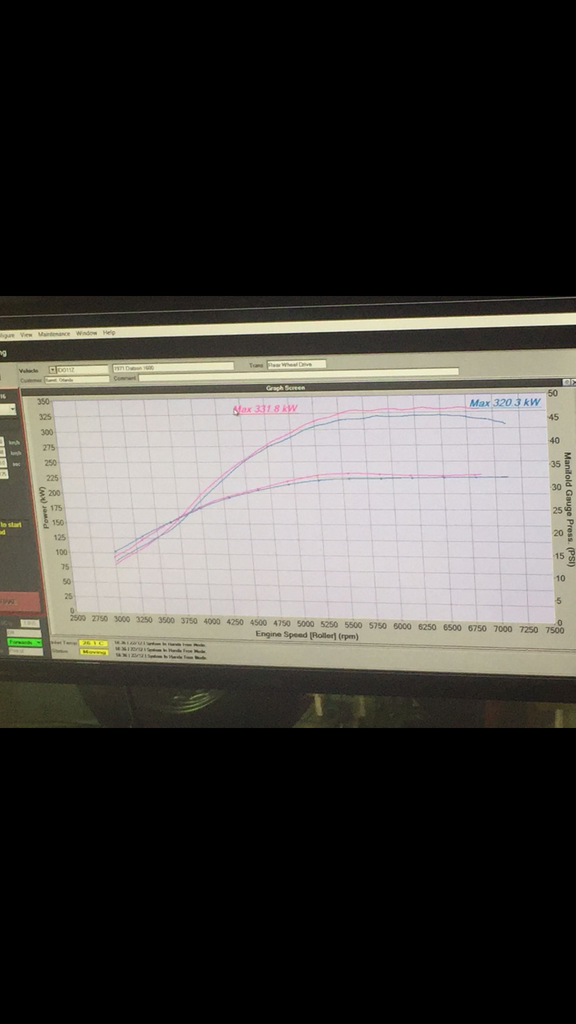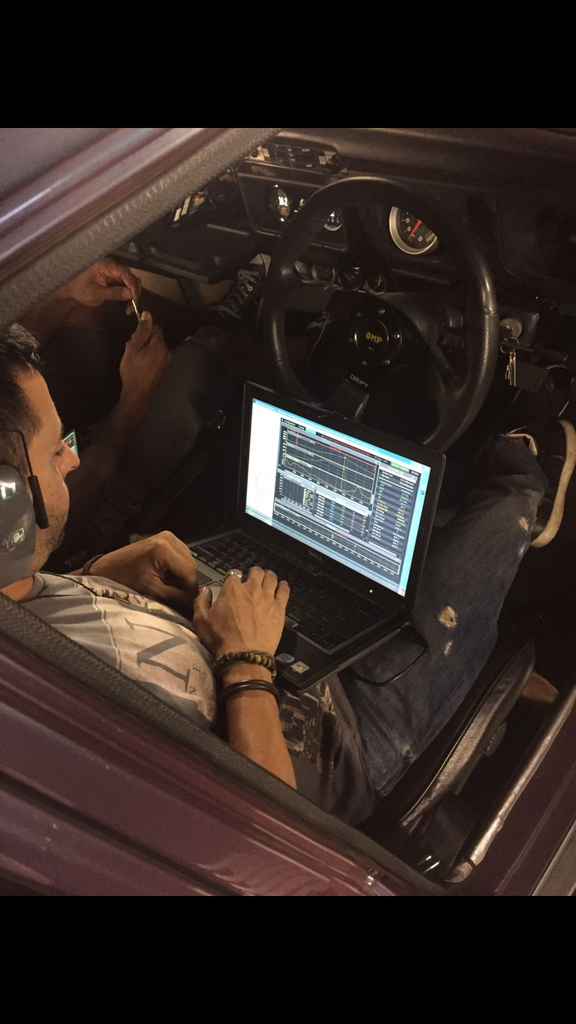G’day guy,
I’ve been posting on this forum for a few years now but this is my first post since changing user name. Just wanted to shed some more light on the results from most recent experimentation with the water meth injection system fitted to the boost shack 1600. The previous results can been seen here
http://www.aquamist.co.uk/forum2/vbu...ead.php?t=2987
In this instalment, the aim was to optimise the tune in the lower RPM range and increase the total power output by increasing the water meth flow to around 50% of total fuel flow. This equated to roughly 1250cc/min. The system was set up to use a total of 4 jets, 3 in the charge pipe post intercooler and 1 pre turbo.
Tuning saw us achieve some great gains in the lower and mid range RPM, as you can see from the before and after dyno pictures below. But with the water meth activated, we soon realized that this configuration was not yielding the results we were after, with a 16kw decrease over our last peak numbers.
At this point, we took a set back and sat down with the Unigroup Engineering crew to investigate the possible causes of the drop in power and a way ahead. In the end it came down to the fact the we were injecting too much water meth in a localised area, as we had over 1100cc/min being injected at one area post intercooler. This caused the air to reached and exceeded 100% saturation point, meaning the amount of air entering the engine could no longer suspend the liquid being injected in an atomised form. This causes overcooling of the combustion process due to poor atomisation, leading to a loss in power, which is exactly what we were experiencing.
It was decided that we would remove one of the three charge pipe jets which would reduce the post intercooler injection to around 800cc/min. This resulted in an 11kw in in power and a much nicer power curve right through the rev range. That said, we were still 5kw off our previous peak of 336kw. We decided to leave it there for now, as we will be making some changes in the near future, which we will expand on shortly.

During the tuning process, we paid close attention to the EGTs, via the thermocouples fitted to the exhaust manifold. A significant temperature drop in EGTs was noticed when water meth was activated, as was the fact that cylinder number 2 was running quite a bit hotter than the rest. Some individual cylinder fuel adjustment was used to quickly solve this issue.


During a recent outing to Sydney’s roll racing, we did some data logging. The ambient temp on the day was up around the 38-degree mark. In the waiting lanes, air intake temp reached 50+ degrees. At the end of each run, air intake temps were down to 40 degrees.
In the next instalment, we will be maintaining the current flow rate but making the switch back to direct port water meth injection. This will be done using 1x140cc/min jet in each inlet runner, 1x250cc/min jet post intercooler piping and 1x150cc/min jet pre turbo. The reason for making the switch is for better atomisation, less chance of saturation and a more equal distribution of the water meth. We are hopeful that with this change and some more fine tuning, we will be able to achieve 350rwkw. Only time will tell so stay tuned. Please feel free to add to the discussion by leaving any questions or feedback you may have. The links below are some videos of the car at Sydneys Roll Racing events. Cheers, Orlando
https://youtu.be/mDHA5L54B6A
https://youtu.be/aXkfvyRhUyQ